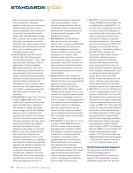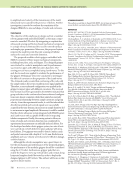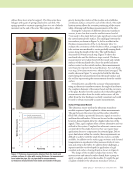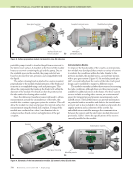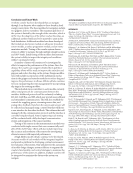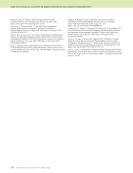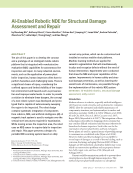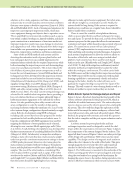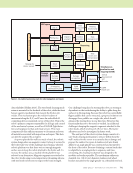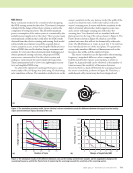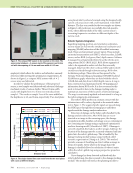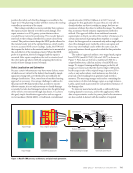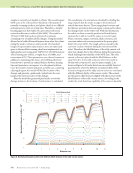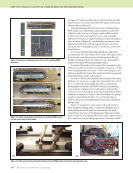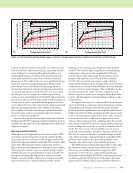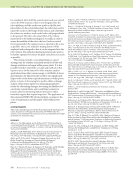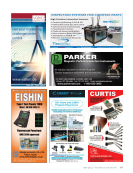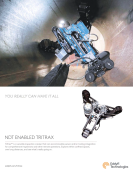
J U L Y 2 0 2 1 • M A T E R I A L S E V A L U A T I O N 663 Robotic Inspection WELCOME TO THE MATERIALS EVALUATION TECHNICAL FOCUS ISSUE on Robotic Inspection! It is an honor to serve as the guest technical editor for this special issue. Robotics is an interdisciplinary field within science and engineering. For half a century, starting with the first simple robots that stepped onto the factory floor, this field has evolved to the extent that modern robotics directly or indirectly affect many aspects of our routine lives. This integration has led the global market for robots to boom: experts expect it to grow at a rate of more than 25%, reaching around US$210 billion by 2025 (Statista 2021). To function efficiently as part of our lives, robots have been developed with integrated mobility components, computer science, and sensing systems to help humans in a variety of ways. During the past decades, the application of robotics in medical and military fields has advanced significantly however, the use of robotics in other critical fields, such as nondestructive testing (NDT), is still in the initial stages. The key challenge in the application of robotics for the NDT of complex components with sophisticated materials, limited accessibility, and complex shapes and geometries is to integrate sensing, mobility, and effective data-driven algorithms reliably in a robotic platform that can adjust its control strategy based on NDT needs. The best example of such a system, however, can be found in nature, where the biological sensing systems of animals are integrated with mobility components as multifunctional elements to collect the data in their living environment, then process the data in real time for processes such as food foraging, mating, and threat assessment. These biological systems are immensely complex, yet with a thorough understanding they can provide vital fundamental insight when pioneering new ideas in STEM. The sensing, mobility, and inference systems of animals have evolved over millions of years to allow them to communicate, find mates and food, and escape predators. A fascinating group of animals including aye-aye lemurs, bats, dolphins, and woodpeckers use self-generated acoustical cues when foraging. This behavior is very similar to a process in NDT where an active acoustic wave is generated and the response from a material (such as an echo) is used to characterize material properties as well as detect discontinuities. While robotic inspection technologies have evolved over the past few decades, these technolo- gies are incredibly weak compared to what animals have developed after millions of years of evolution. For example, the near-field auditory system of the aye-aye, combined with its unique motor-intelligence system, has evolved to allow them to detect worms and grubs within deep cavities in tree bark with complex material and geometry (National Science Foundation 2021 Nemati and Deghan-Niri 2020). The same type of cavities in acoustically difficult and cluttered environments, such as the forests of Madagascar, cannot currently be easily detected by any technological systems developed by humankind. This special issue provides an overview of recent advancements in robotic inspection. The technical papers aim to introduce readers to developments and accomplishments in robotic inspec- tion technologies where biological systems have inspired the pioneering of integrated mobility and sensing, as well as data-driven methods for inspection purposes. EHSAN DEHGHAN-NIRI, PH.D. Focus Issue Editor niri@nmsu.edu FOCUS letter We can be inspired by nature to develop advanced robotic inspection platforms. Watch the video Watch the Focus Issue Editor’s video on intelligent structures and NDE on YouTube: https://youtu.be/zsJ_Vlwp-X4 REFERENCES National Science Foundation, 2021, “CAREER: Understanding the Exceptional Near-Field Auditory System of the Aye-Aye, One of the Most Unusual Primates in the World,” E. Dehghan-Niri (principal investigator), Award No. 204703 Nemati, H., and E. Dehghan-Niri, 2020, “The Acoustic Near-Field Measurement of Aye-Ayes’ Biological Auditory System Utilizing a Biomimetic Robotic Tap-Scanning,” Bioinspiration & Biomimetics, Vol. 15, No. 5, 056003 Statista, 2021, “Size of the Global Market for Industrial and Non-Industrial Robots between 2018 and 2025,” accessed on 27 May 2021, https://www.statista.com/statistics/760190/worldwide-robotics-market-revenue
ASNT grants non-exclusive, non-transferable license of this material to . All rights reserved. © ASNT 2025. To report unauthorized use, contact: customersupport@asnt.org


























































